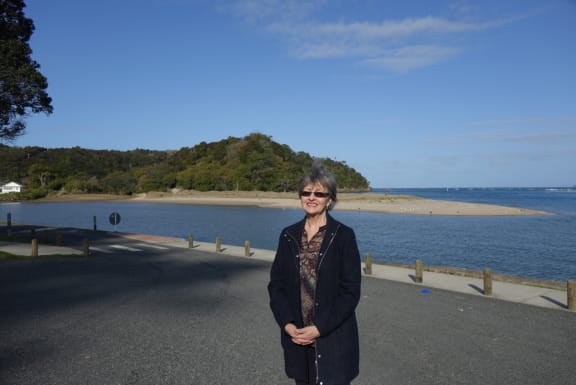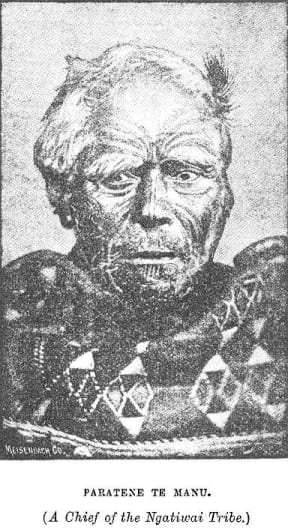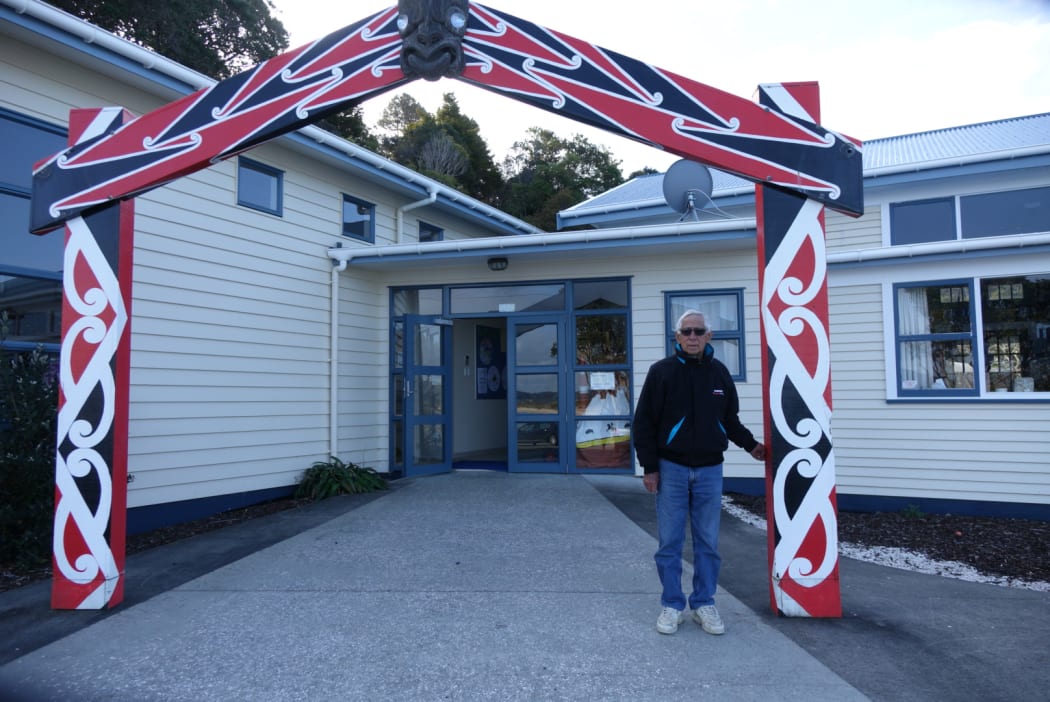
Lois Williams at Ngunguru Photo: RNZ/Lois Williams
In the final segment of the series Te Reo o te Raki (The voices of the north) Lois Williams sits down for a chat with Kaumatua Paratene Te Manu (Sonny) Wellington who works tirelessly for his community. From his work as a Chaplain to organising the Kaumatua line dancing sessions, So what makes him tick? Lois finds out.
The quiet kaumatua of the Tutukaka Coast is a busy man. The first time I tried he was booked up several days ahead doing useful stuff like visiting old friends in hospital, attending the school concert; meetings and trimming a mate's trees. He's only 82, after all, he as happy to take charge of the clippers as his mate is apparently not up to it these days. In the end he tells me "Come along to the marae tomorrow - we'll be line-dancing. We can talk there". And so we did,leaving Sonny's wife Rose to ably lead the boot-scooting seniors.

Sonny Wellington at Ngunguru in the Northland Photo: RNZ/Lois Williams
"The Line Dancing started off as a Kia Ora Ngatiwai health project, then one day I looked around and I was the only Maori left!” he laughs uproariously."So now it's a social thing. We have fun; we have a good gossip and morning tea and we dance. Once a week. It’s good for the hips. "

Paratene Te Manu Photo: Image via Google
Both the whare at Ngunguru marae, and Sonny himself were named for his tupuna, Paratene Te Manu. The original Paratene Te Manu was a 19th century Ngāti Wai rangatira who fought with Hongi Hika in the Musket Wars. He was one of the group of northern Māori taken to London in the 1830's by the well-meaning but muddle-headed Wesleyan Williams Jenkins.
The group met Queen Victoria, performed for her and were feted by British high society, but Jenkins ran out of money and the group went through some hard times on their OE before they made it back to Aotearoa. The original Paratene Te Manu was a close observer of the European ways and was impressed by two things.: the military skills of the British and the education system . His story's been told in the acclaimed novel "Rangatira" written by another descendant, Paula Morris.
And when the rangatira returned to what became known as Wellington's Bay he donated land for a school at Ngunguru - where the primary school stands to this day.
Paratene Te Manu adopted the name Wellington to honour the Duke of Wellington who'd just dealt to Napoleon and it's been the family name ever since. The nickname Sonny came from his Mum, at only 16 years old Sonny laid the cornerstone of the whare. Through the decades, he has led and supported the efforts to build the whare and wharekai up on the hill.

Sonny Wellington at Ngunguru school Photo: RNZ/Lois Williams
During his childhood, Sonny recalls few Māori families in the area - and most of his schoolmates were pākeha. He never thought much about the differences until he went to secondary school, where some teachers felt obliged to make a distinction.
Sonny is the official kaumatua not only of the school, but of the local Ambulance, Fire Brigade and Coastguard. Last year he was awarded a Civic Honour by the Whangarei District Council. The citation reads:
Sonny's reach into his community is broad, touching many generations, interest groups, and walks of life. He works tirelessly for the good of his community, enriching it with his knowledge of Māori traditions and history..
Being an assuming chap, Sonny shrugs off the praise. "The most satisfying part of my role is being able to give comfort and spiritual support to people when they need it. To make people feel better about things. That is the best thing in the world." he says.

